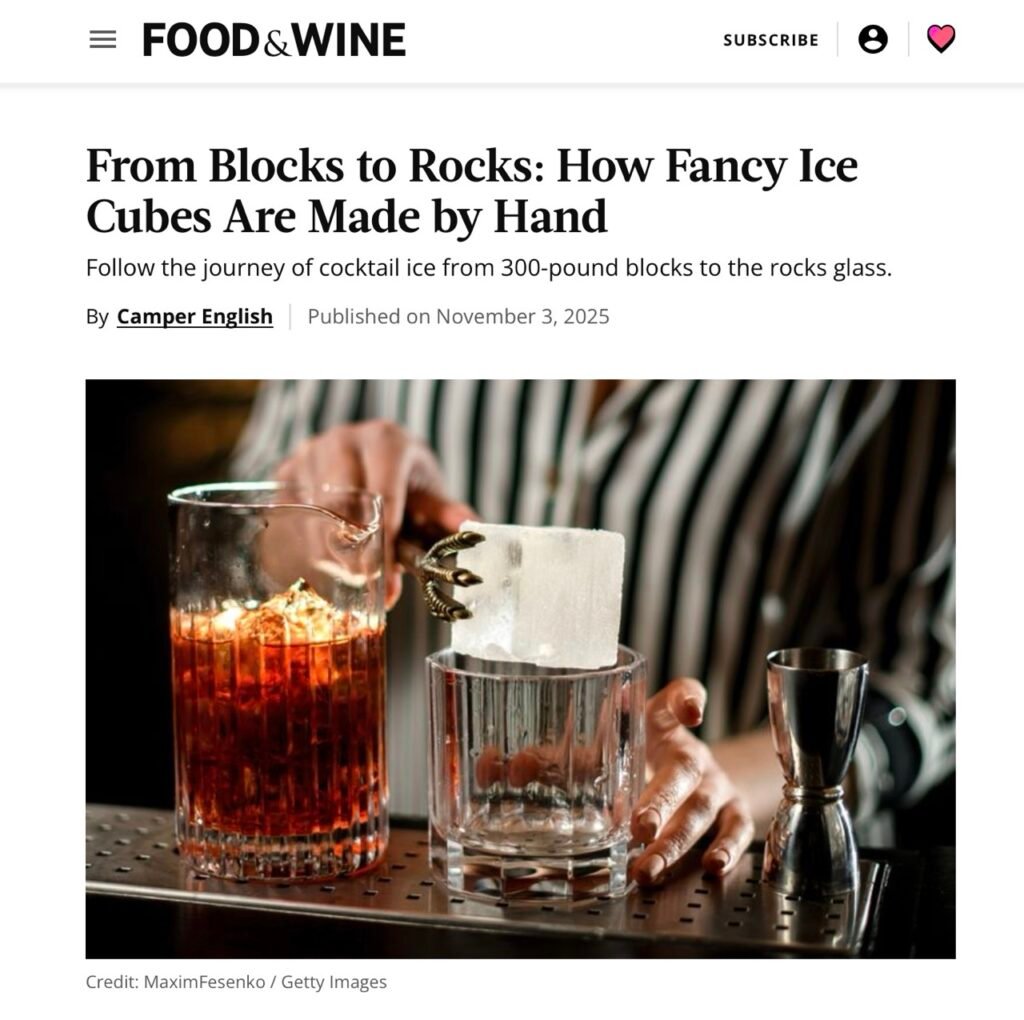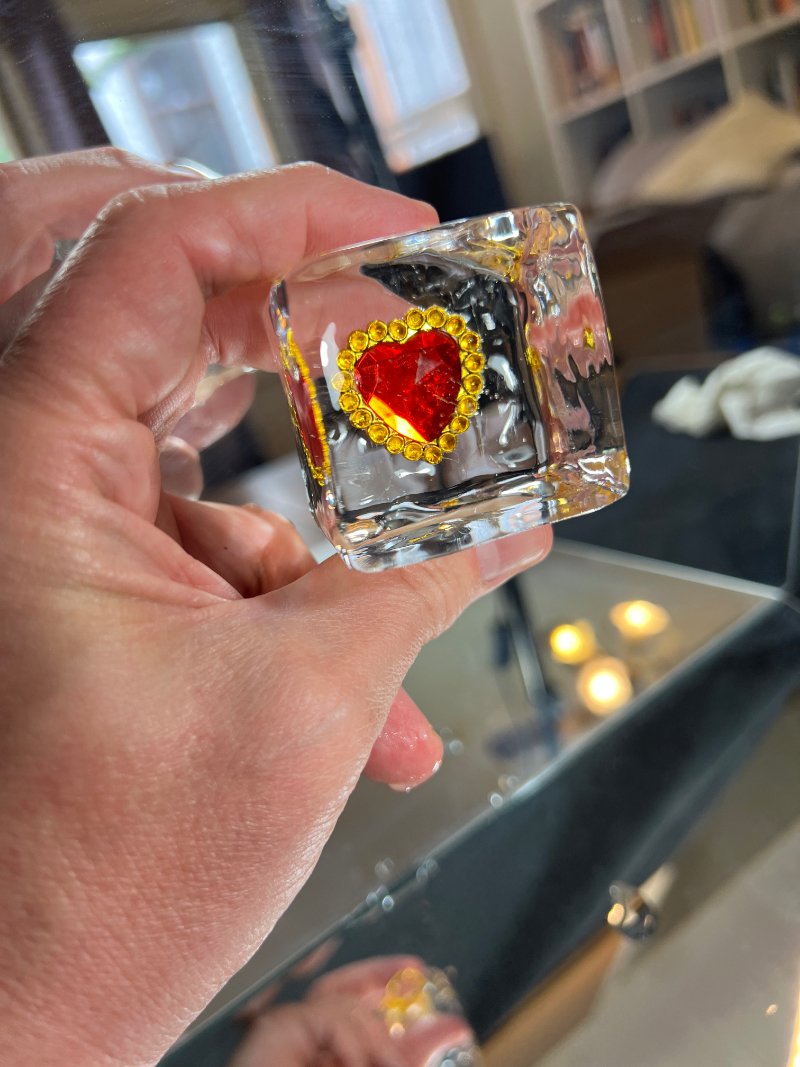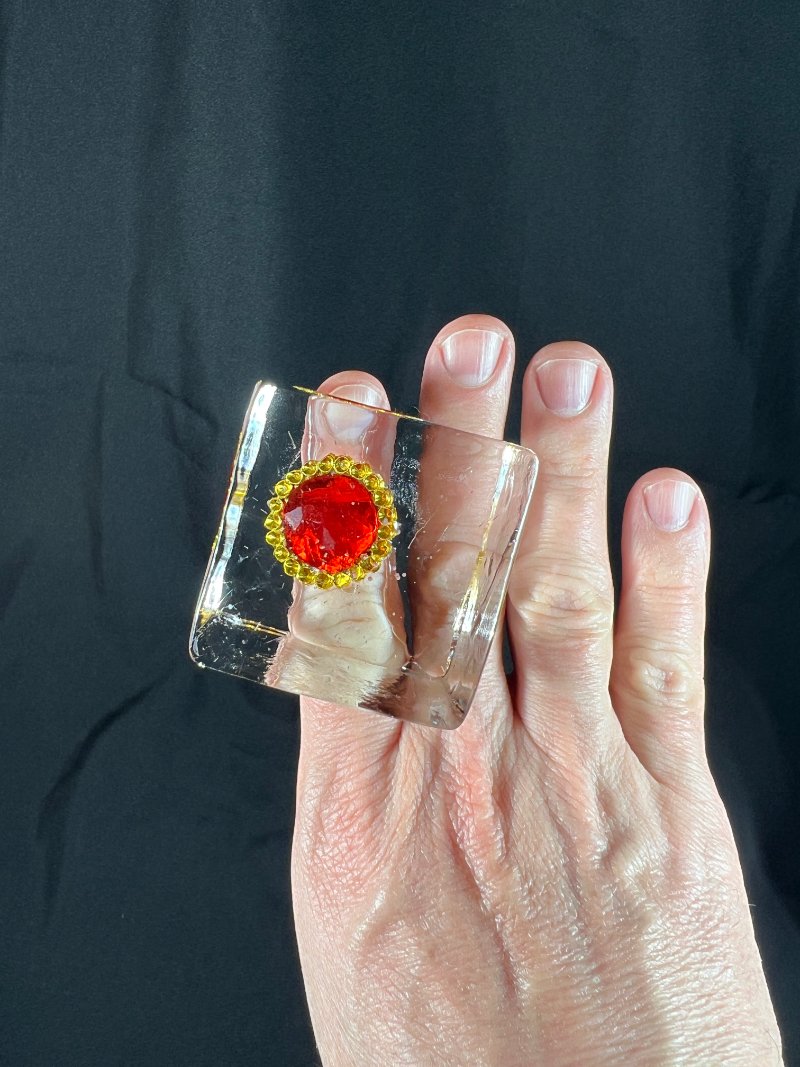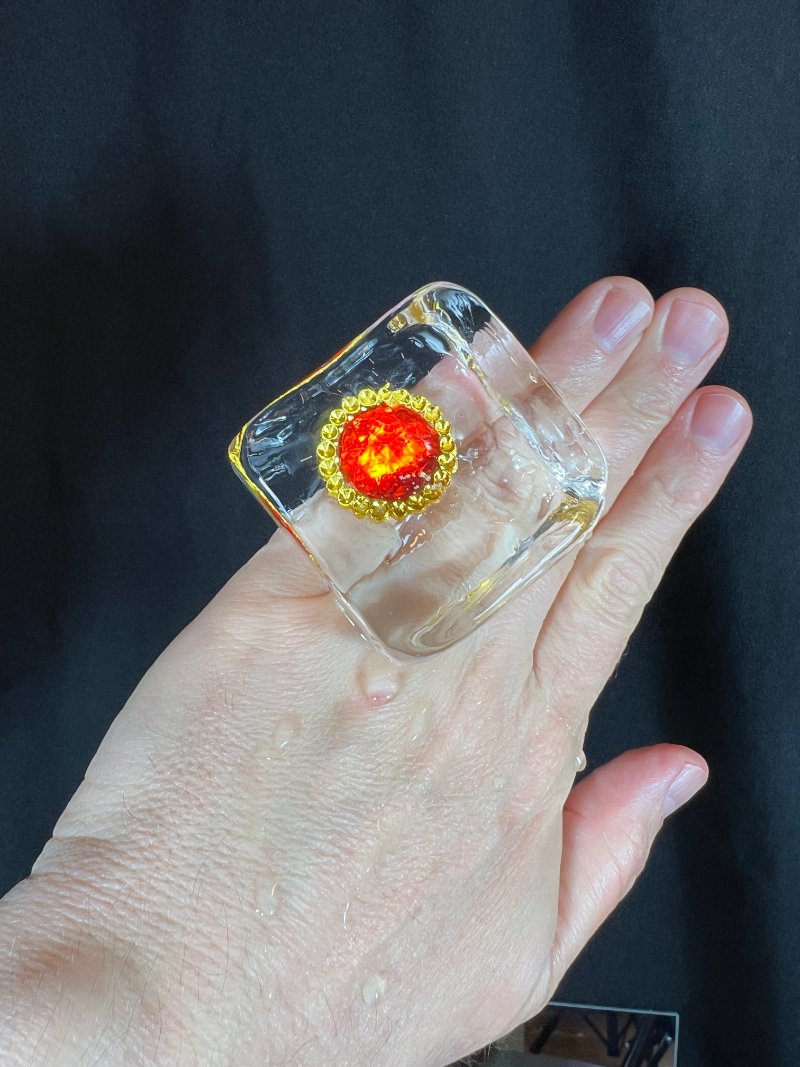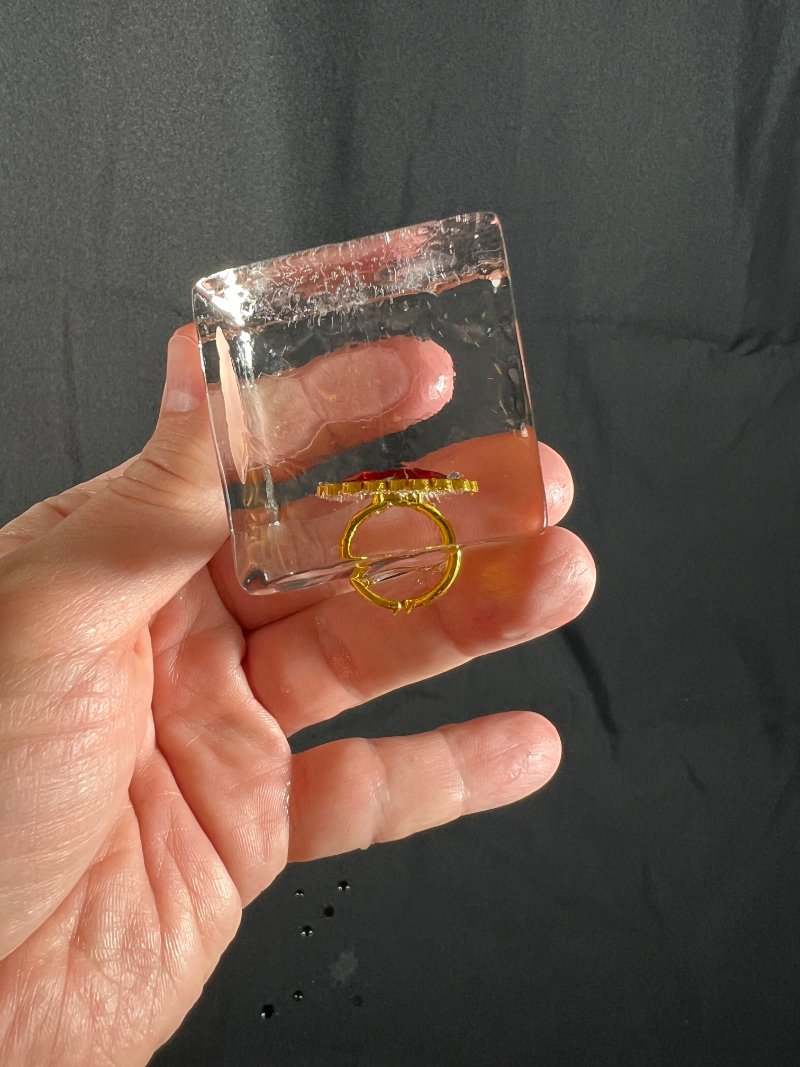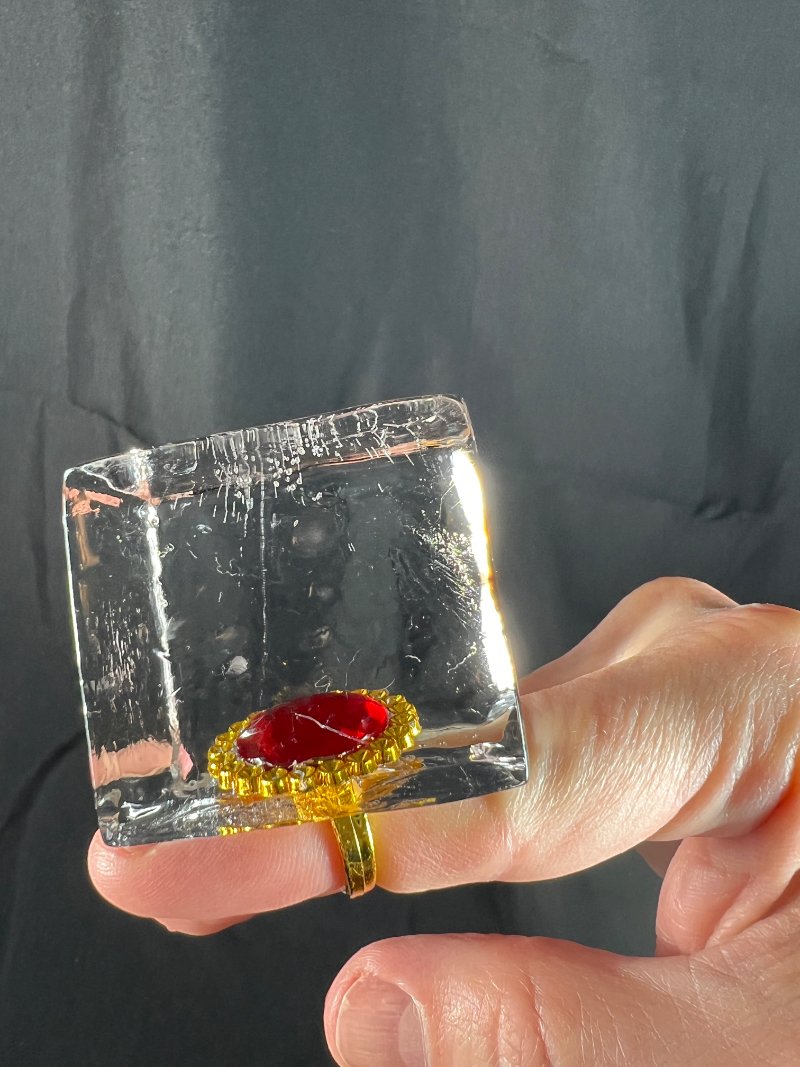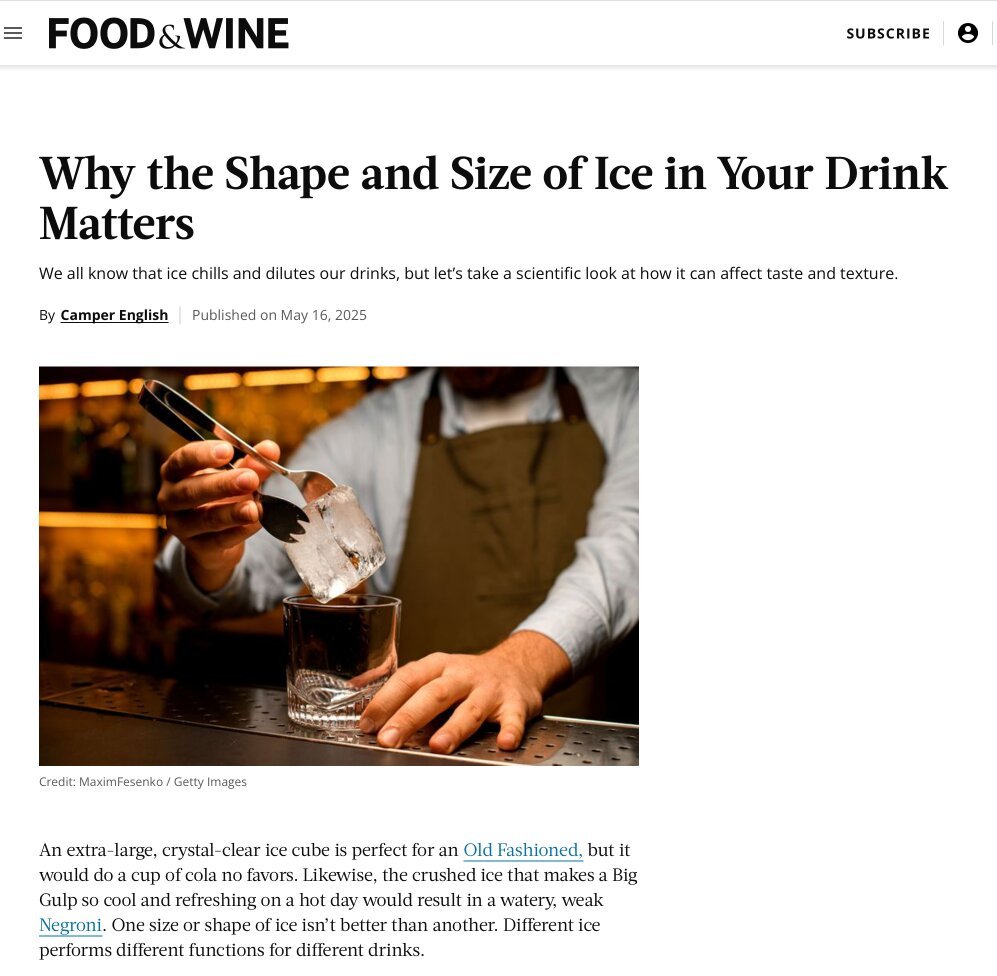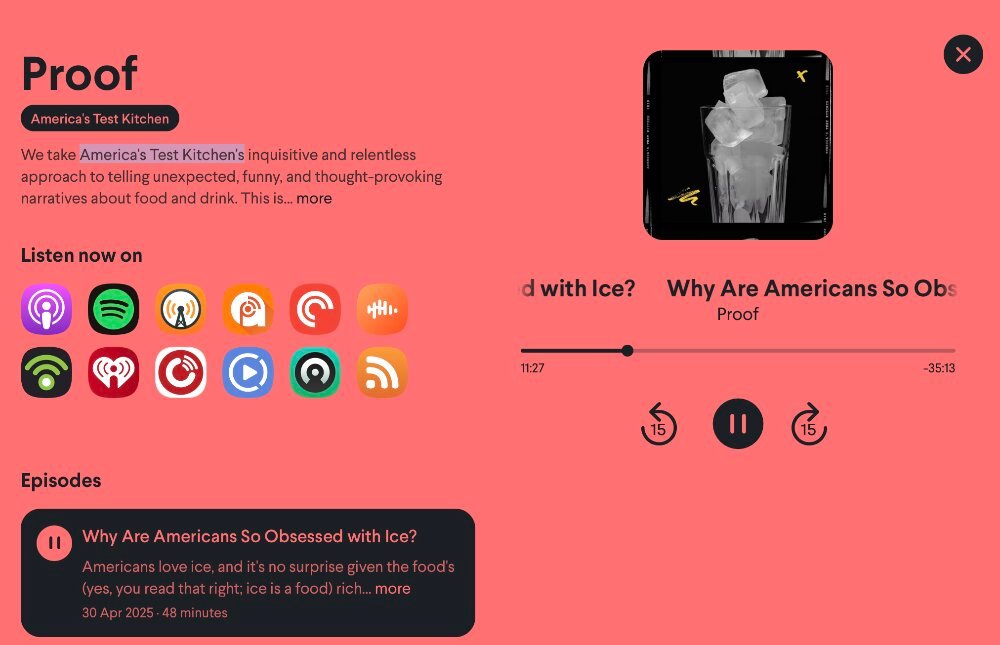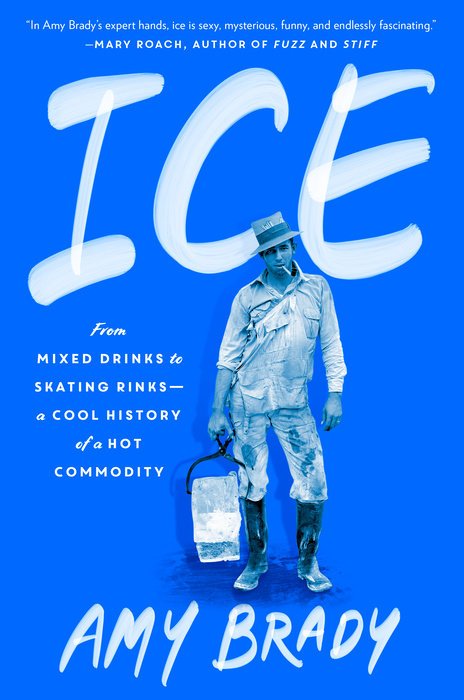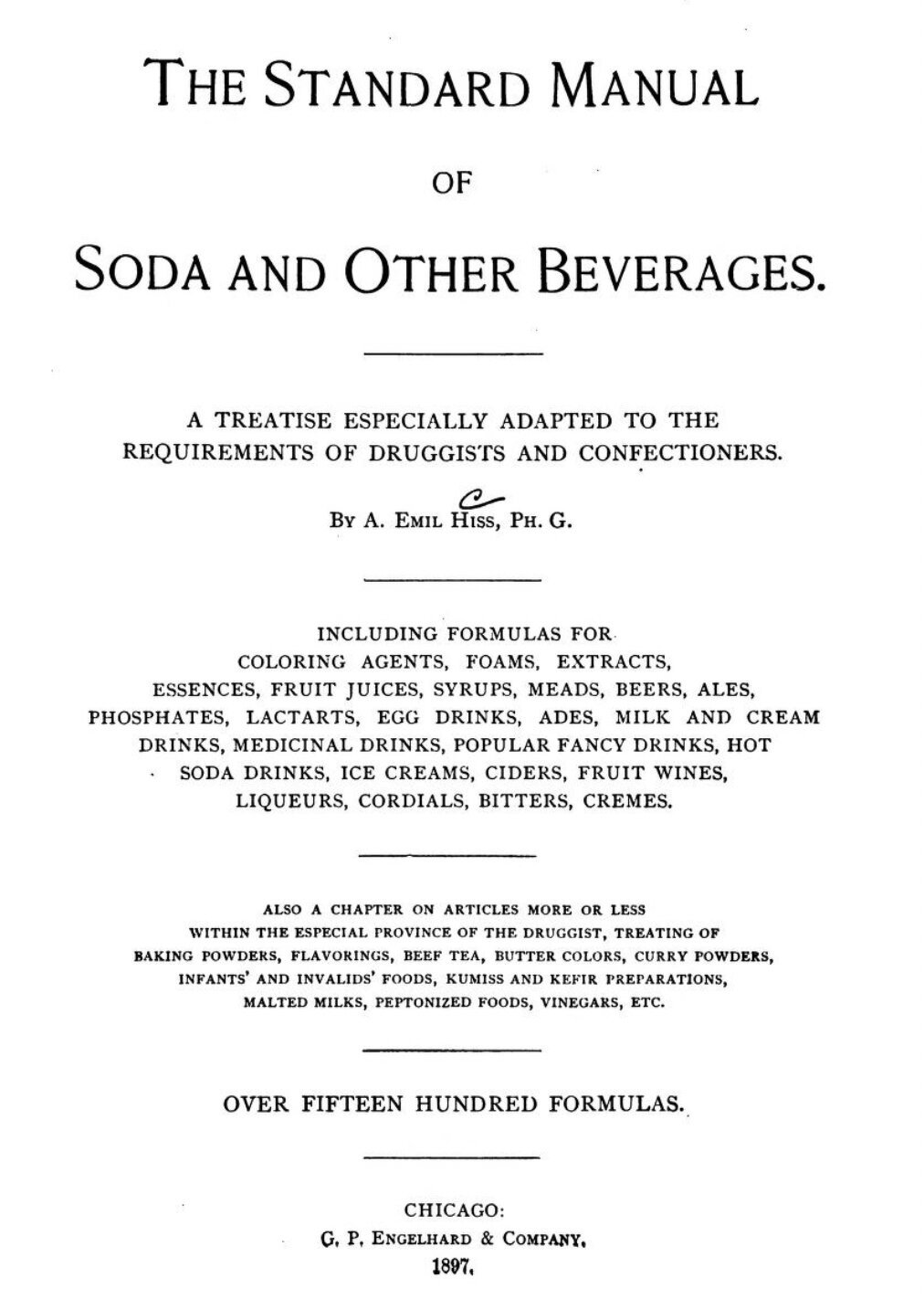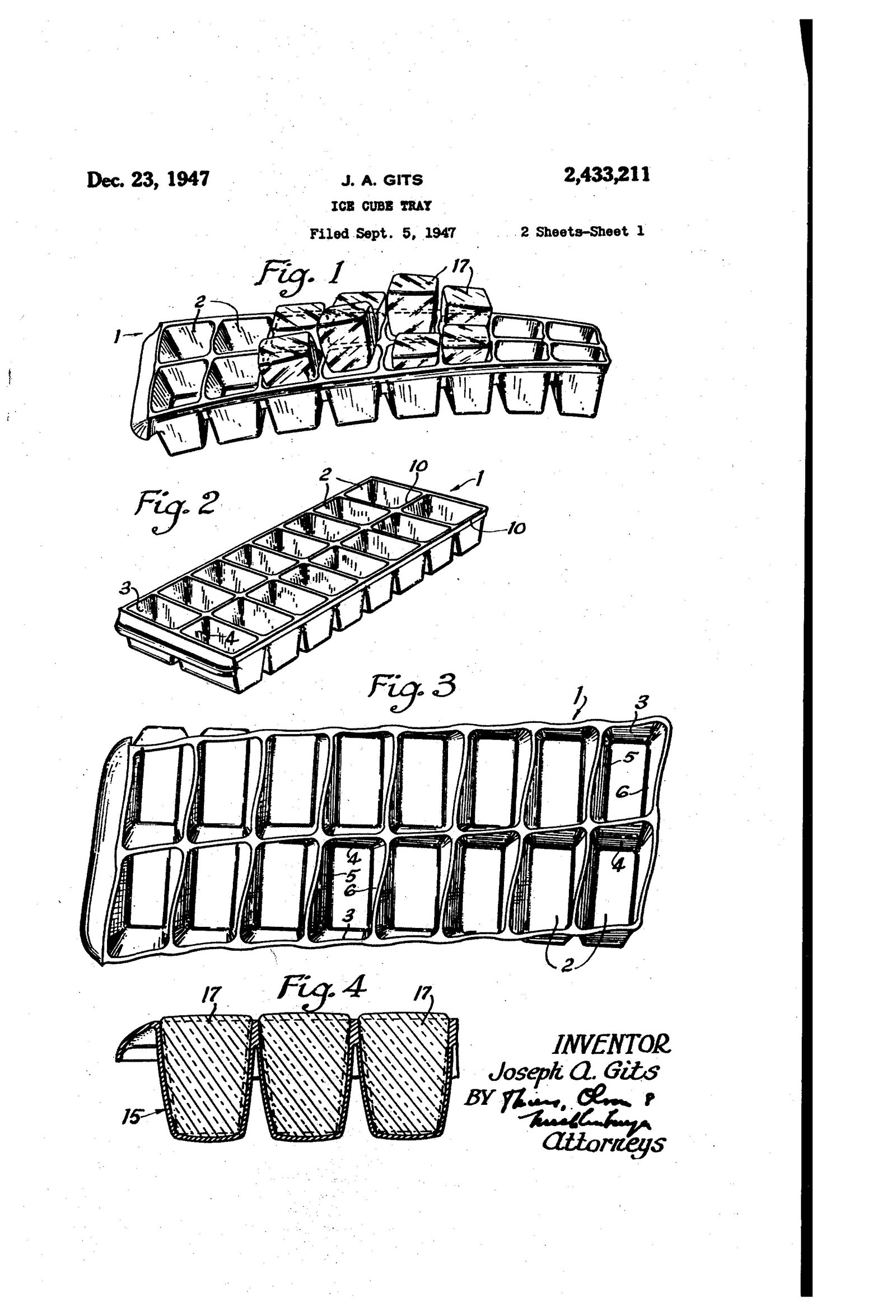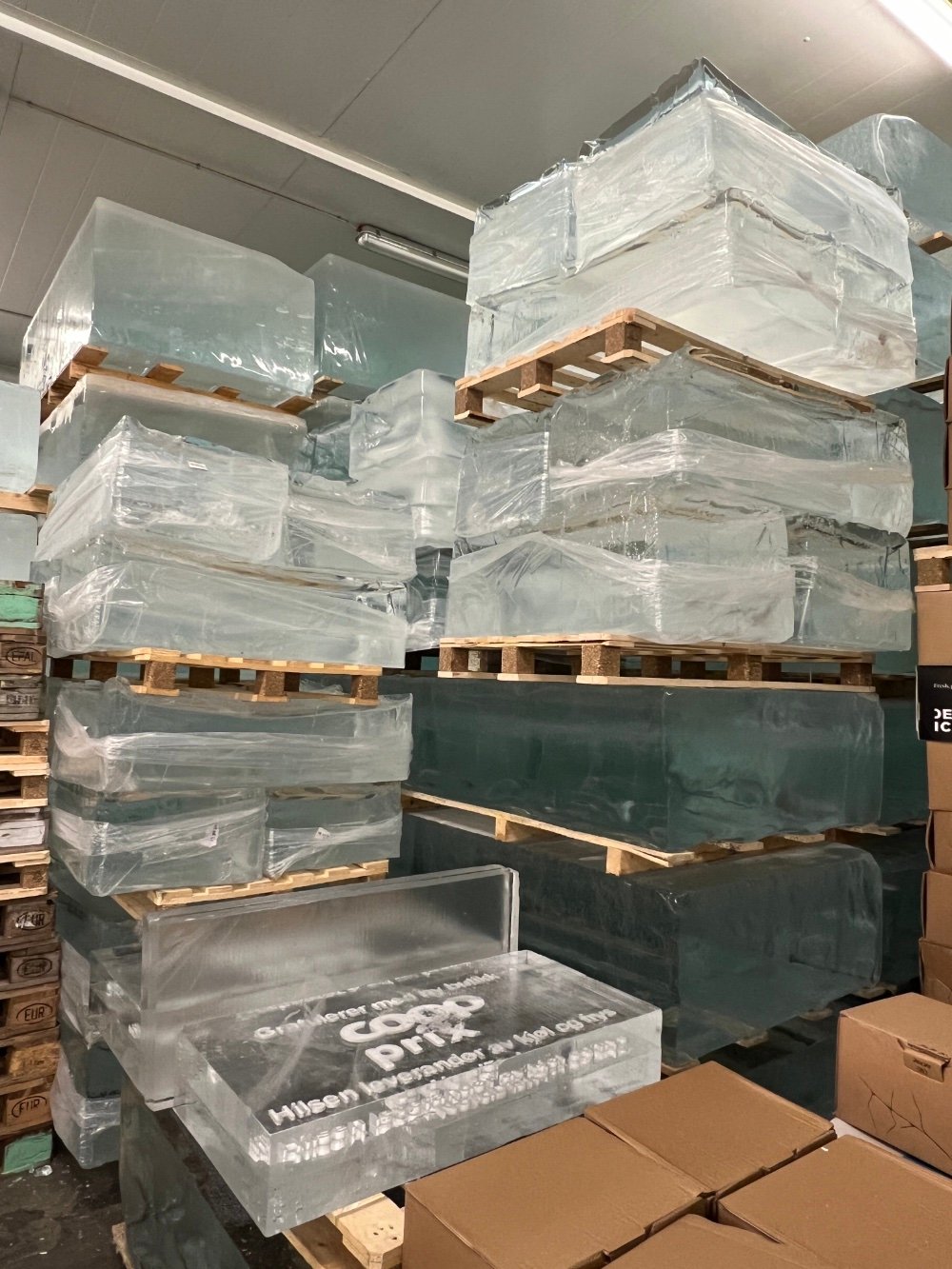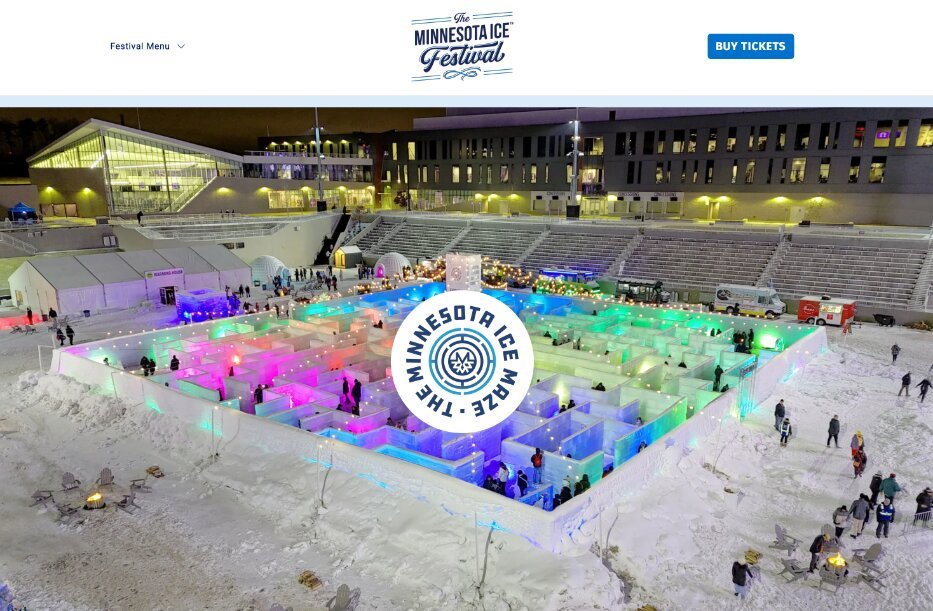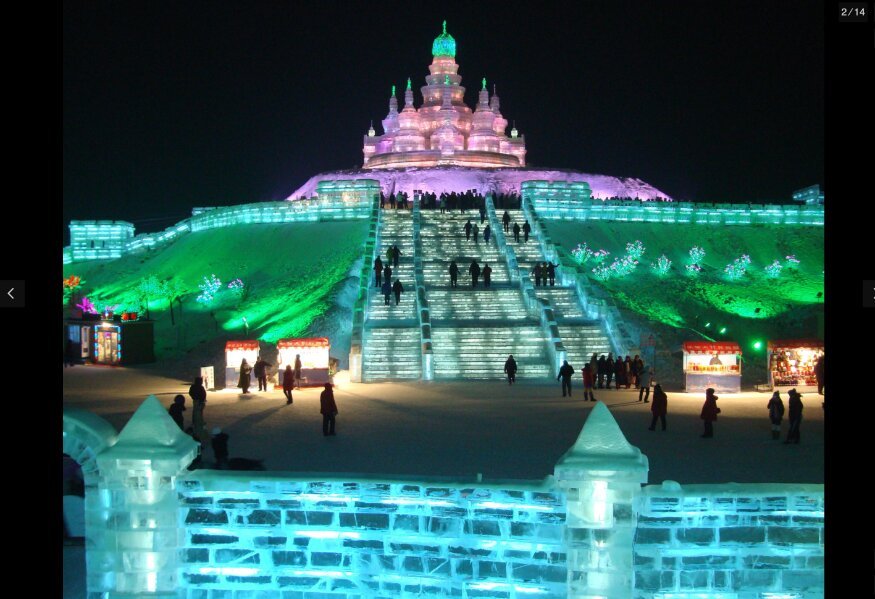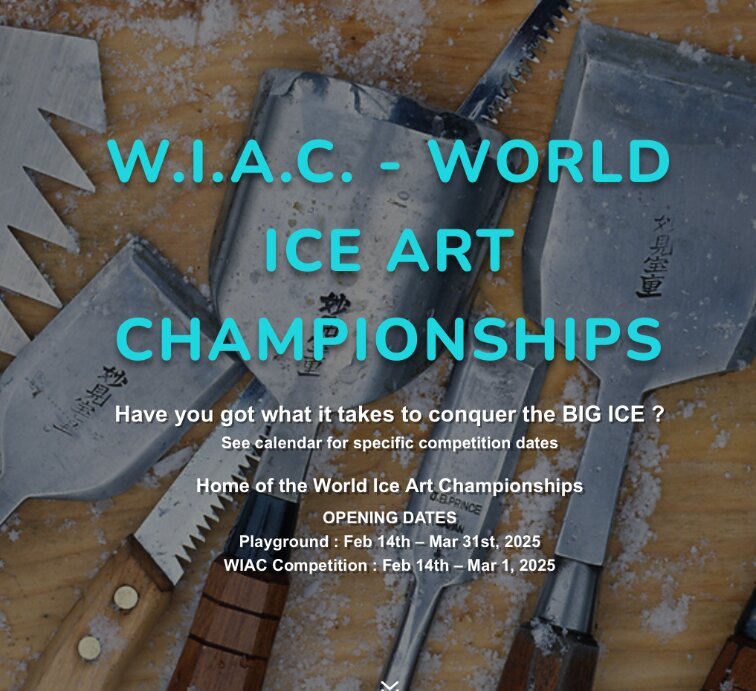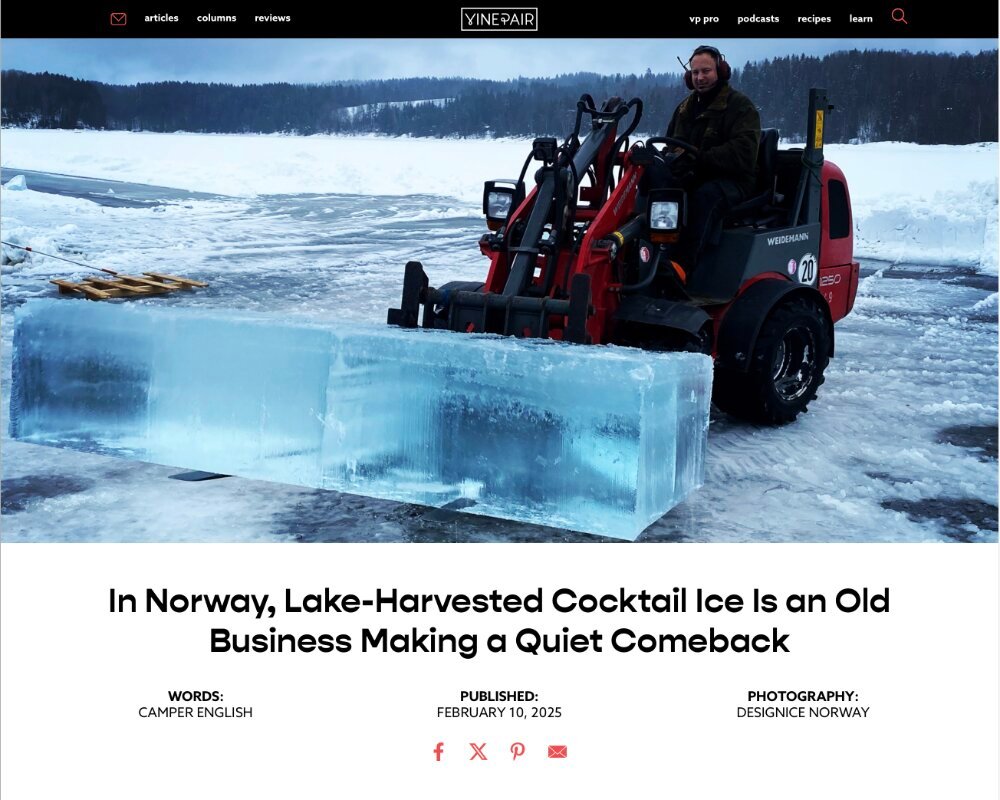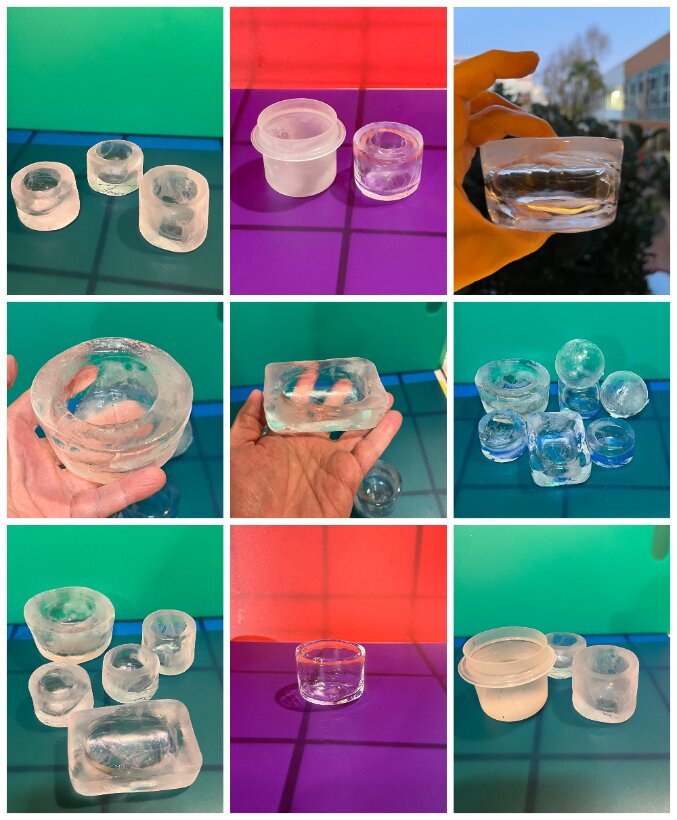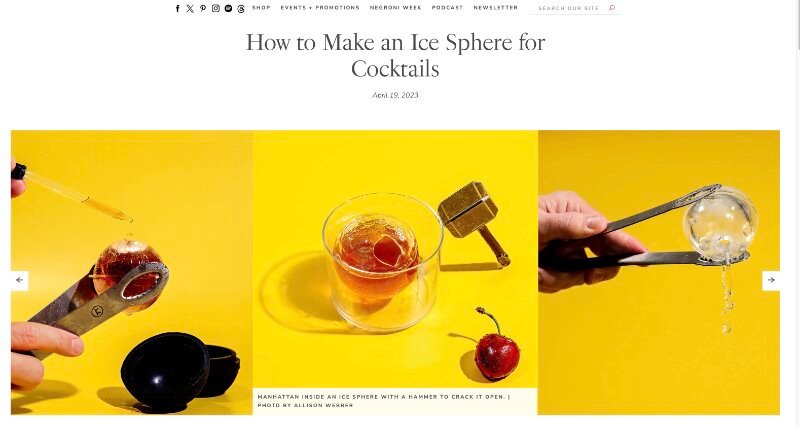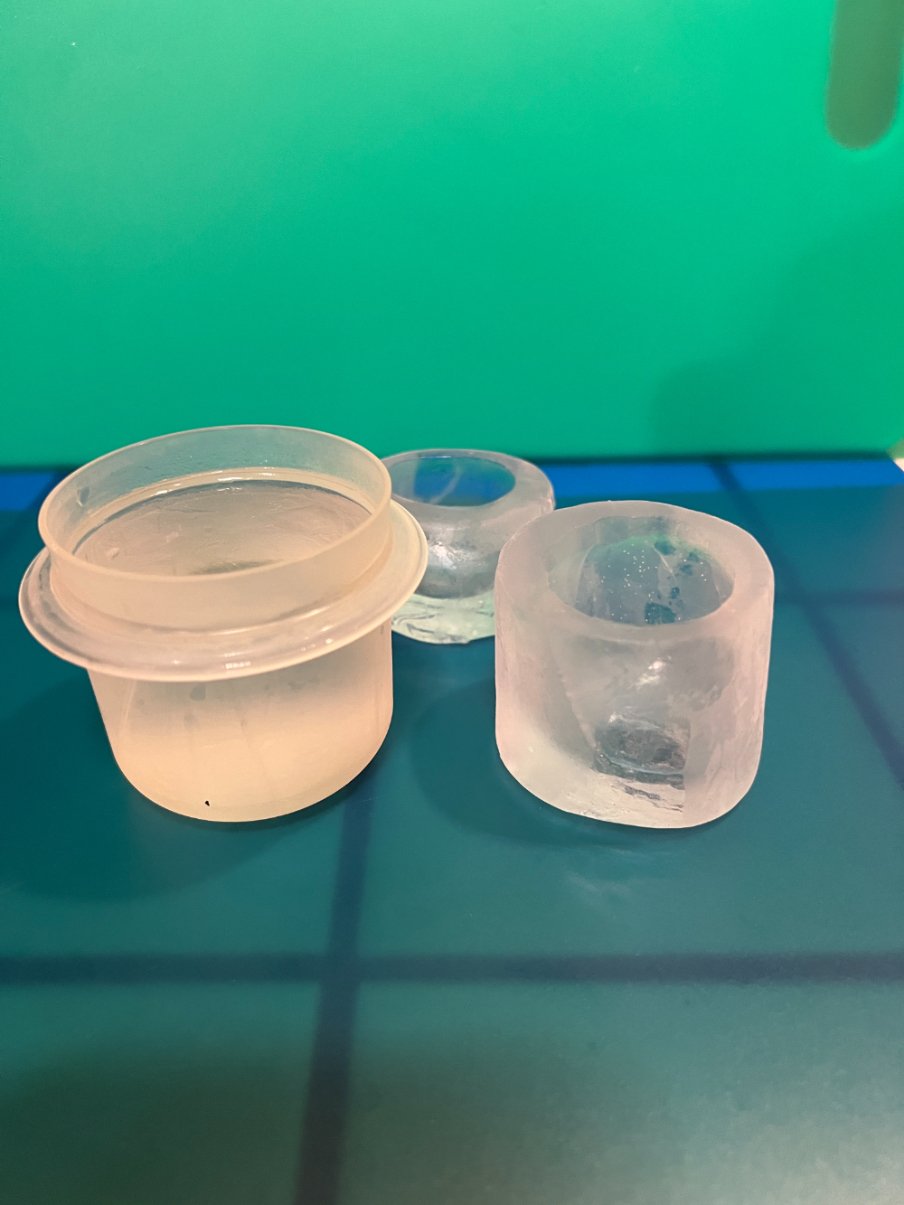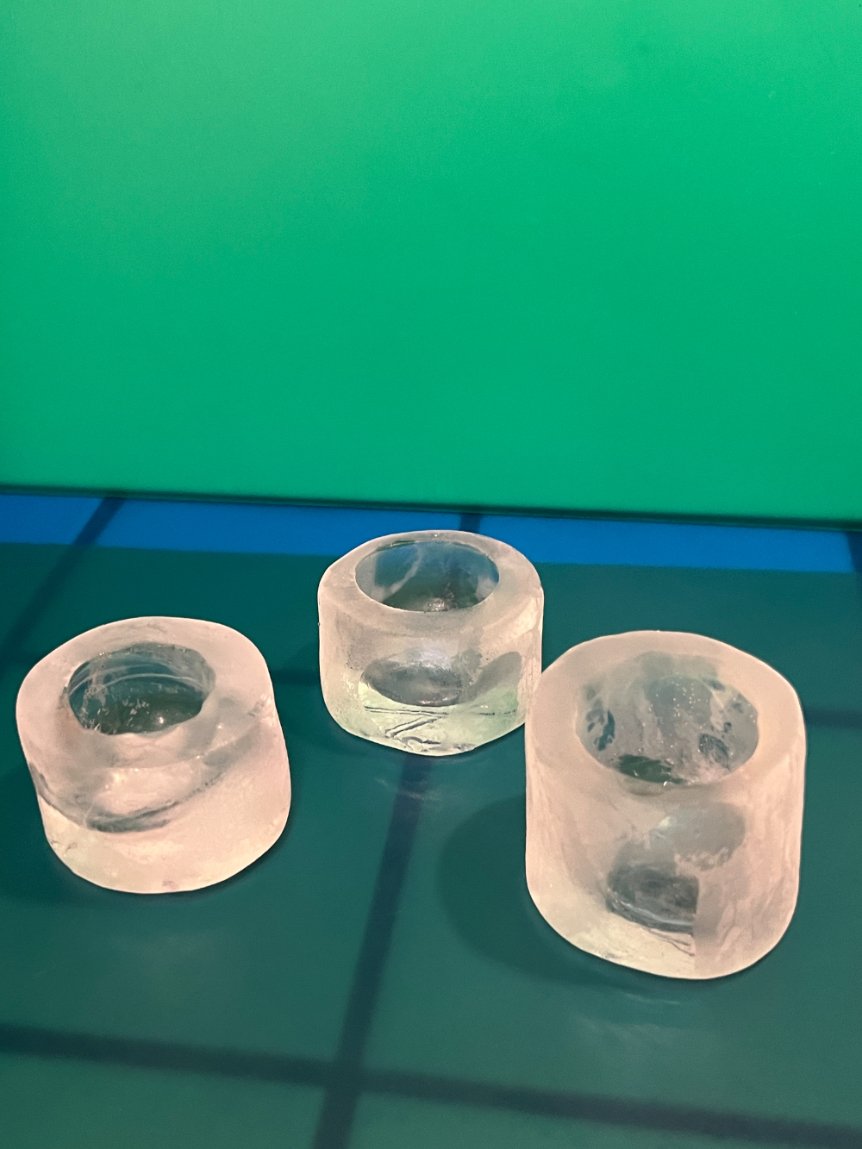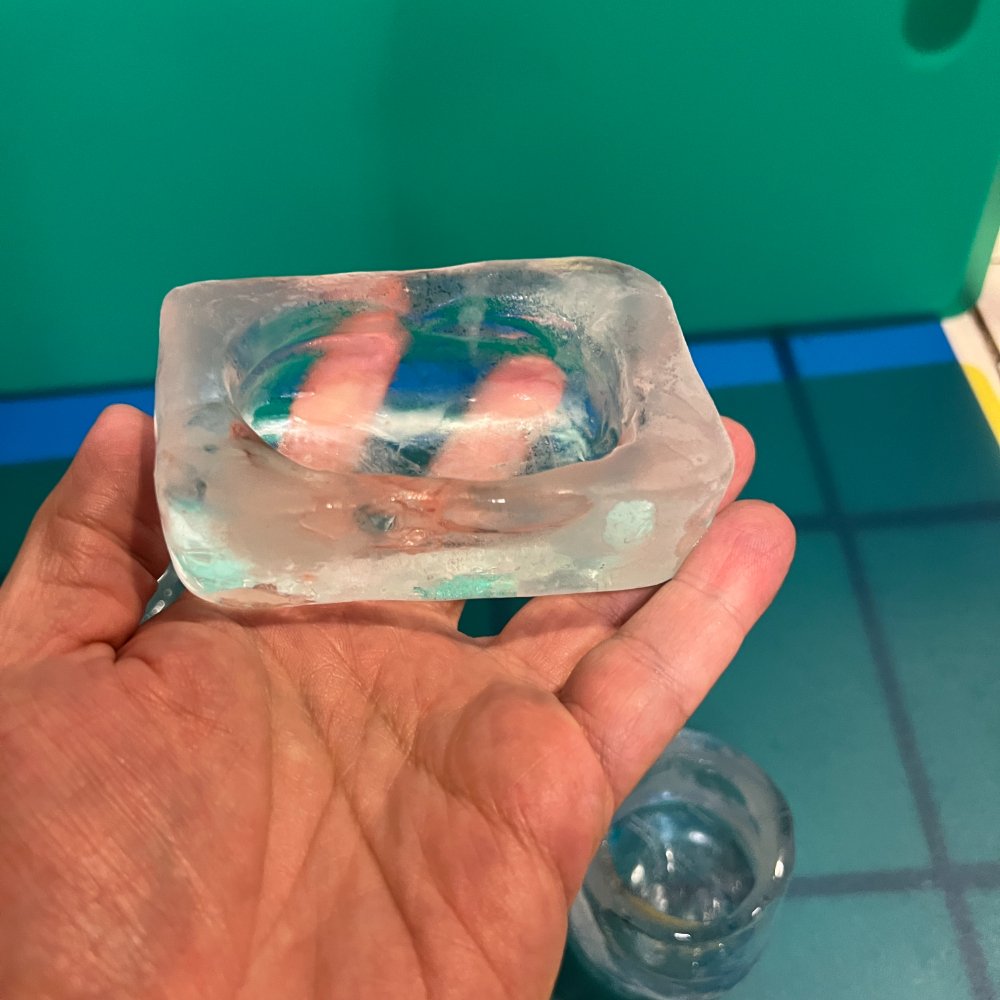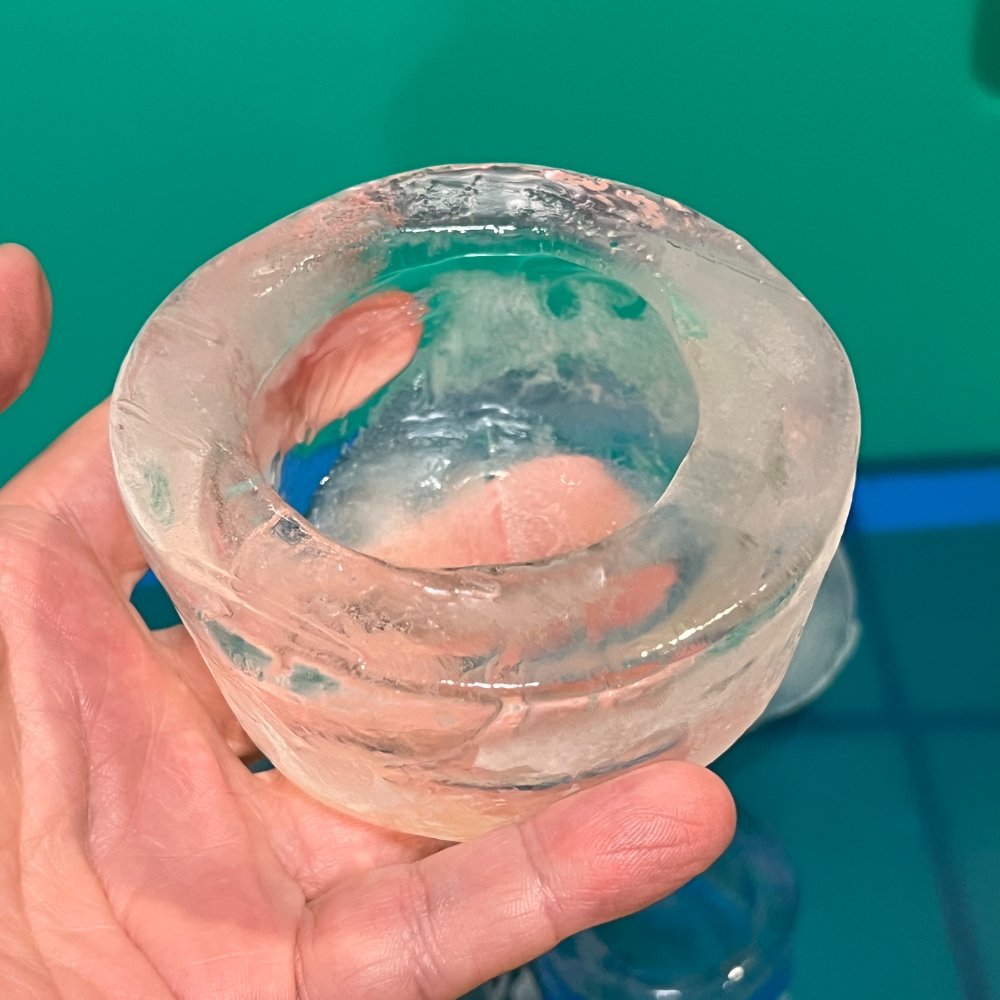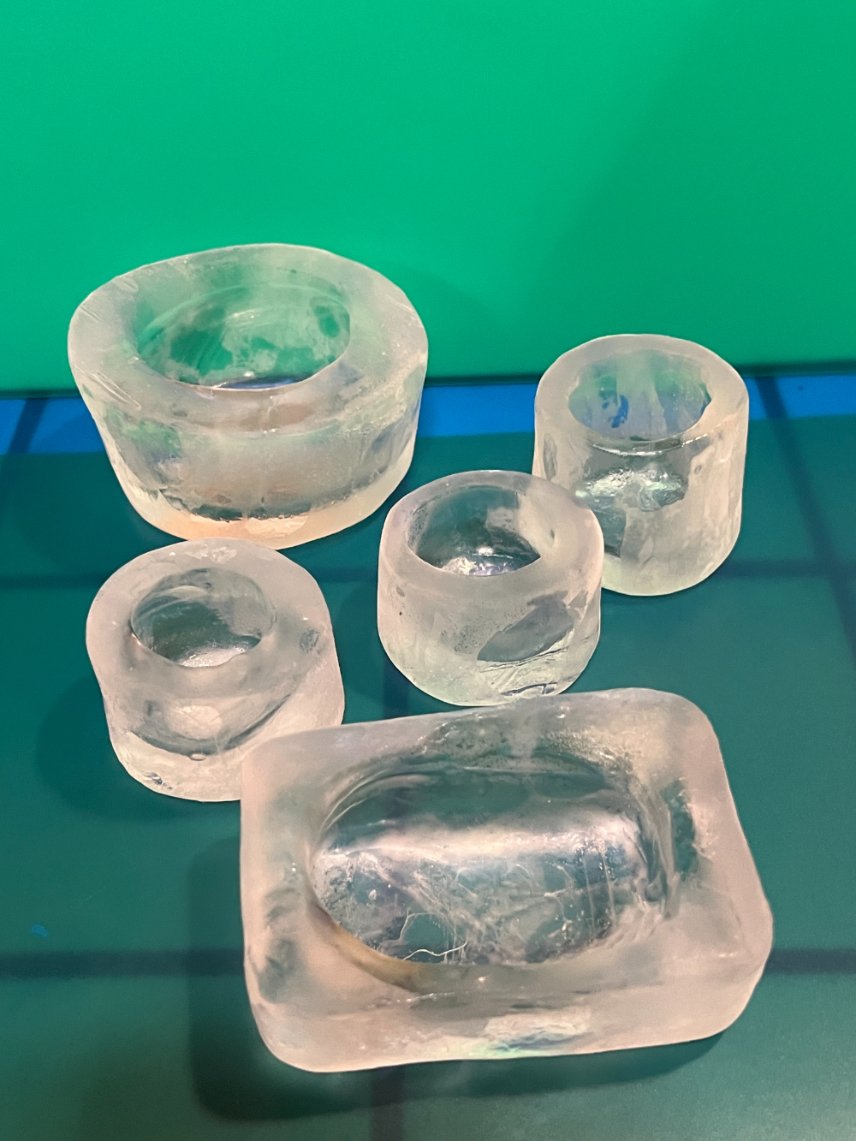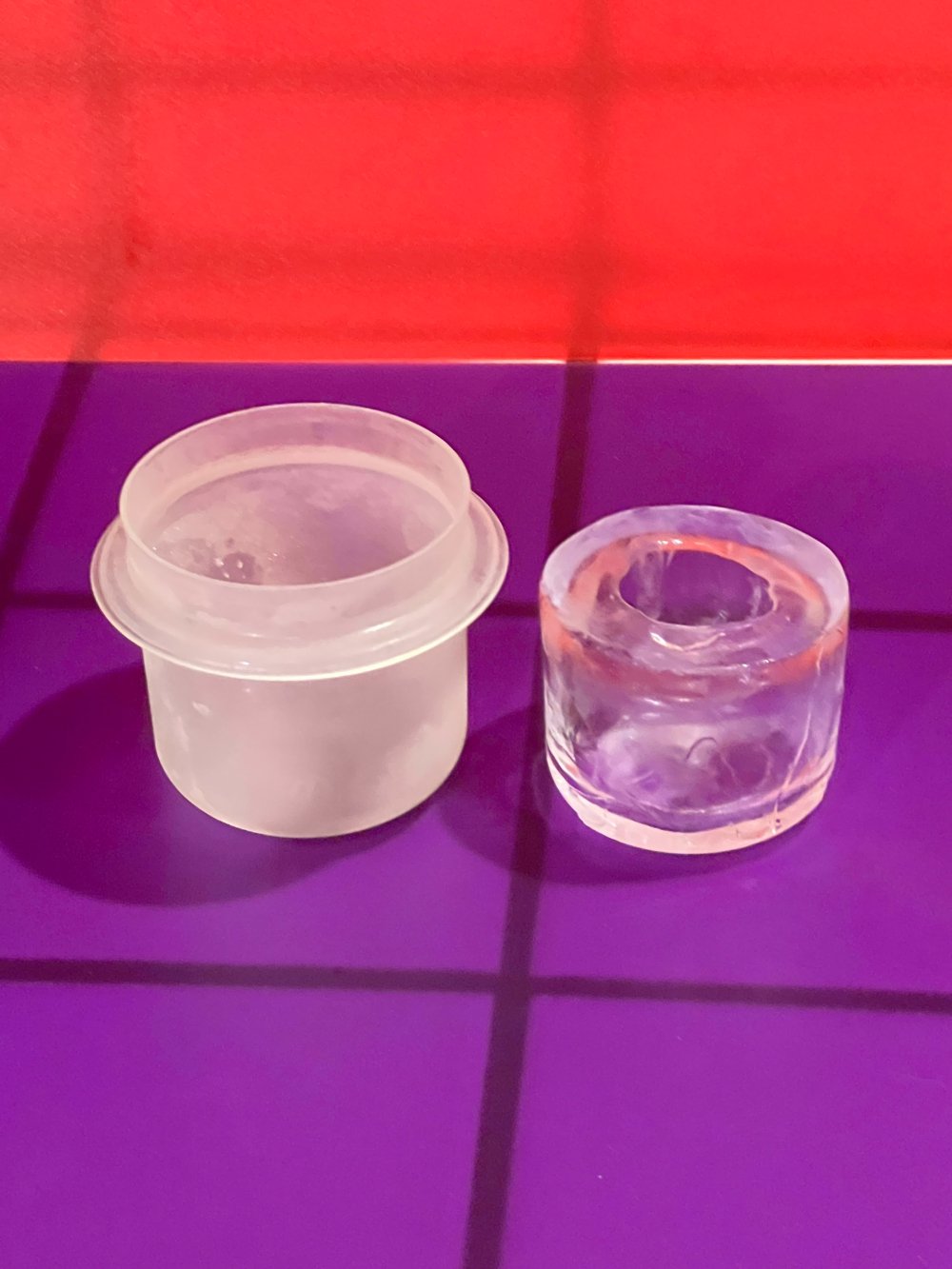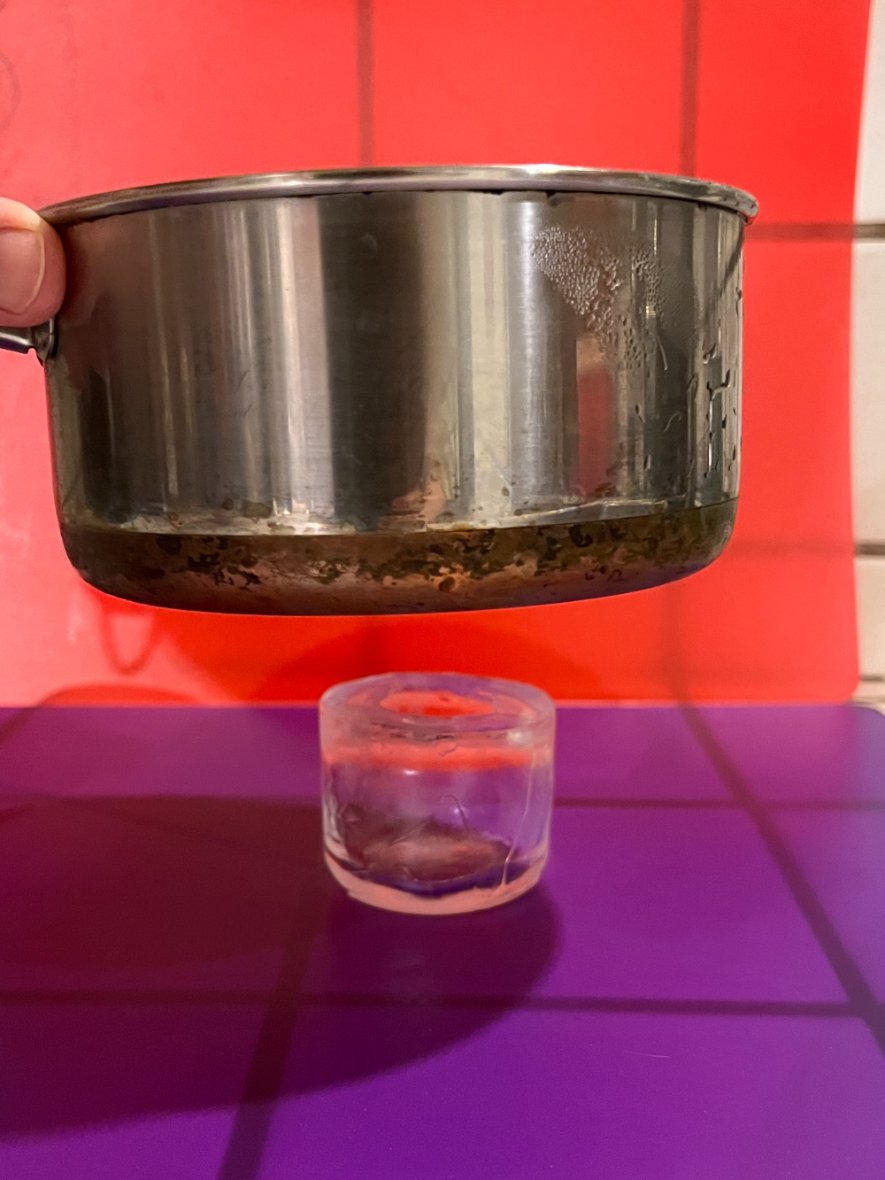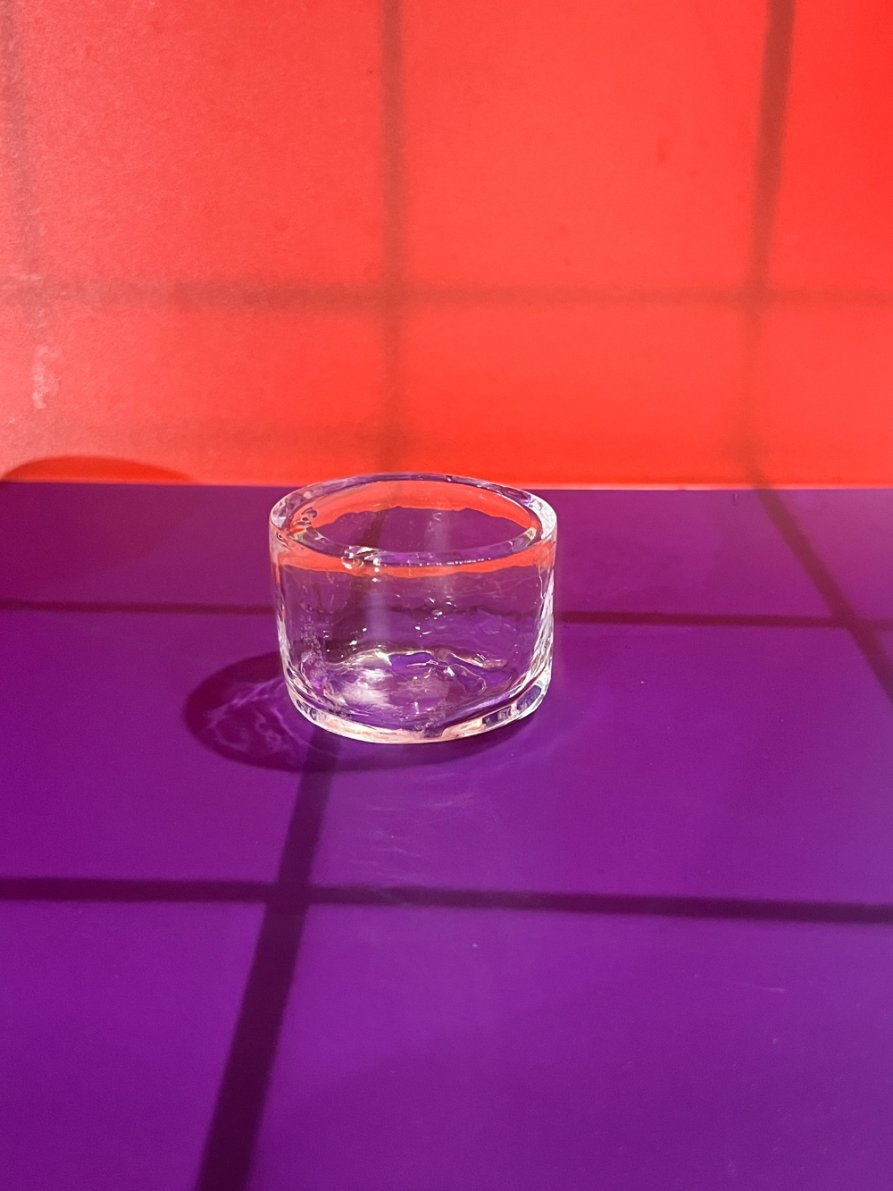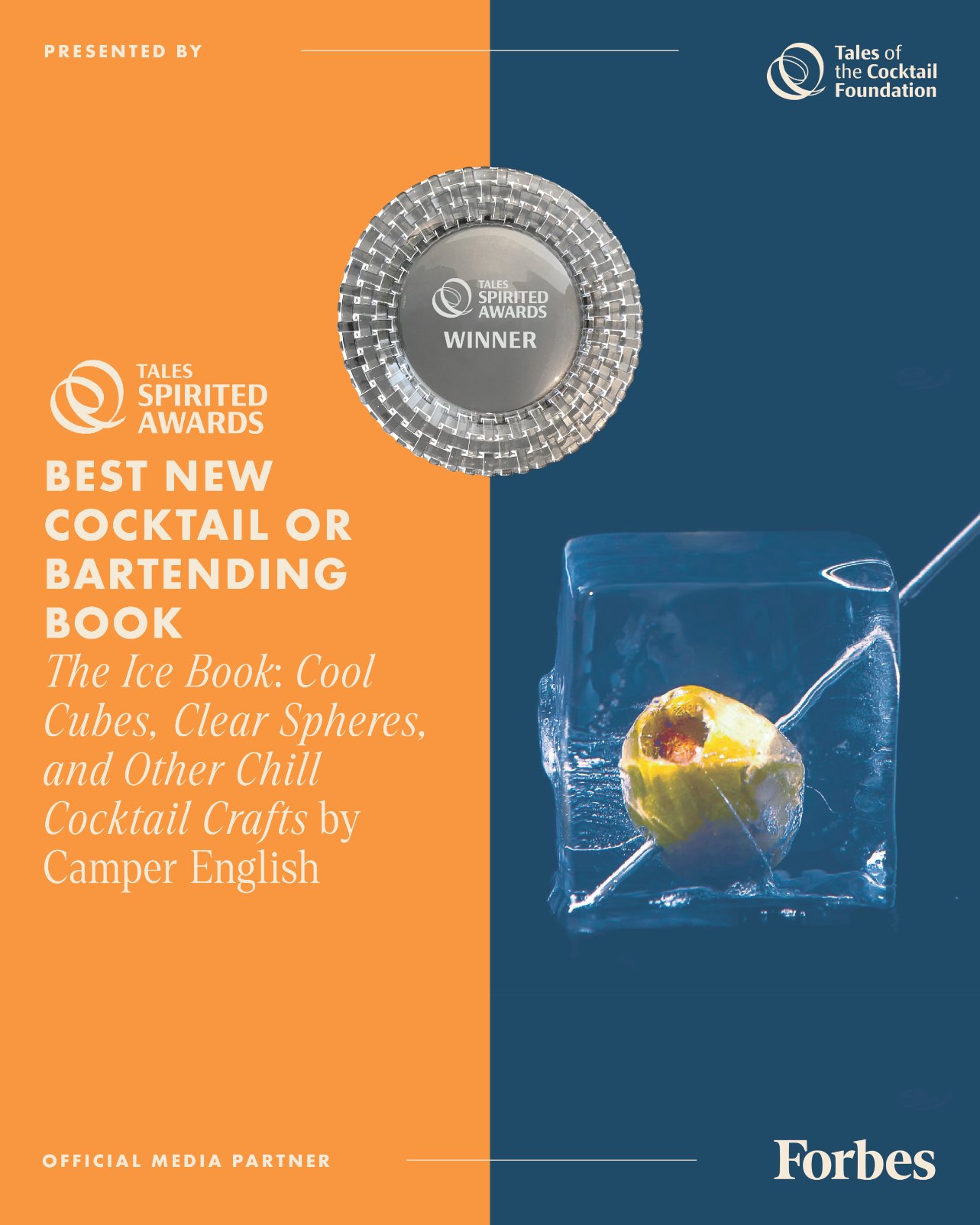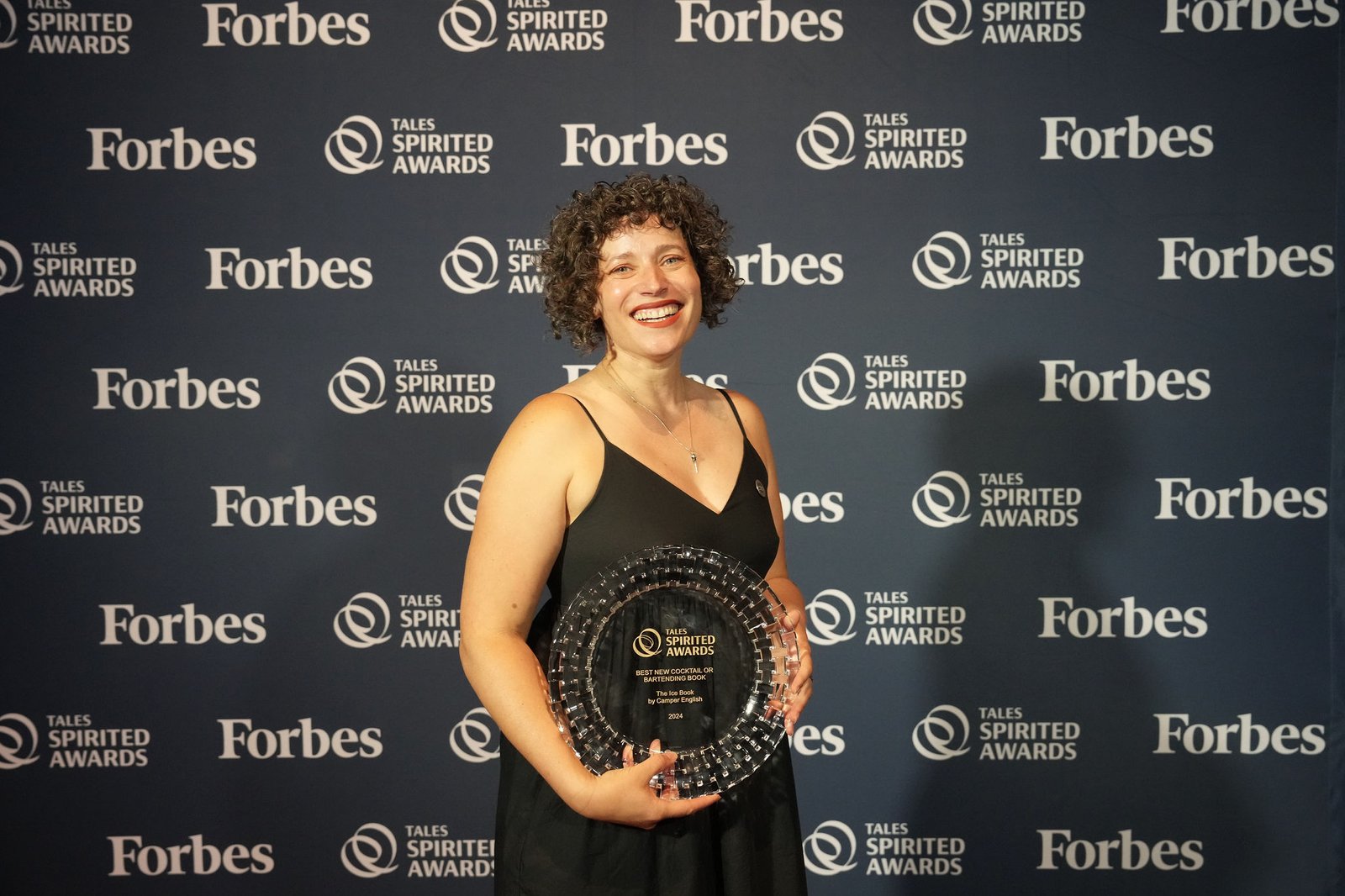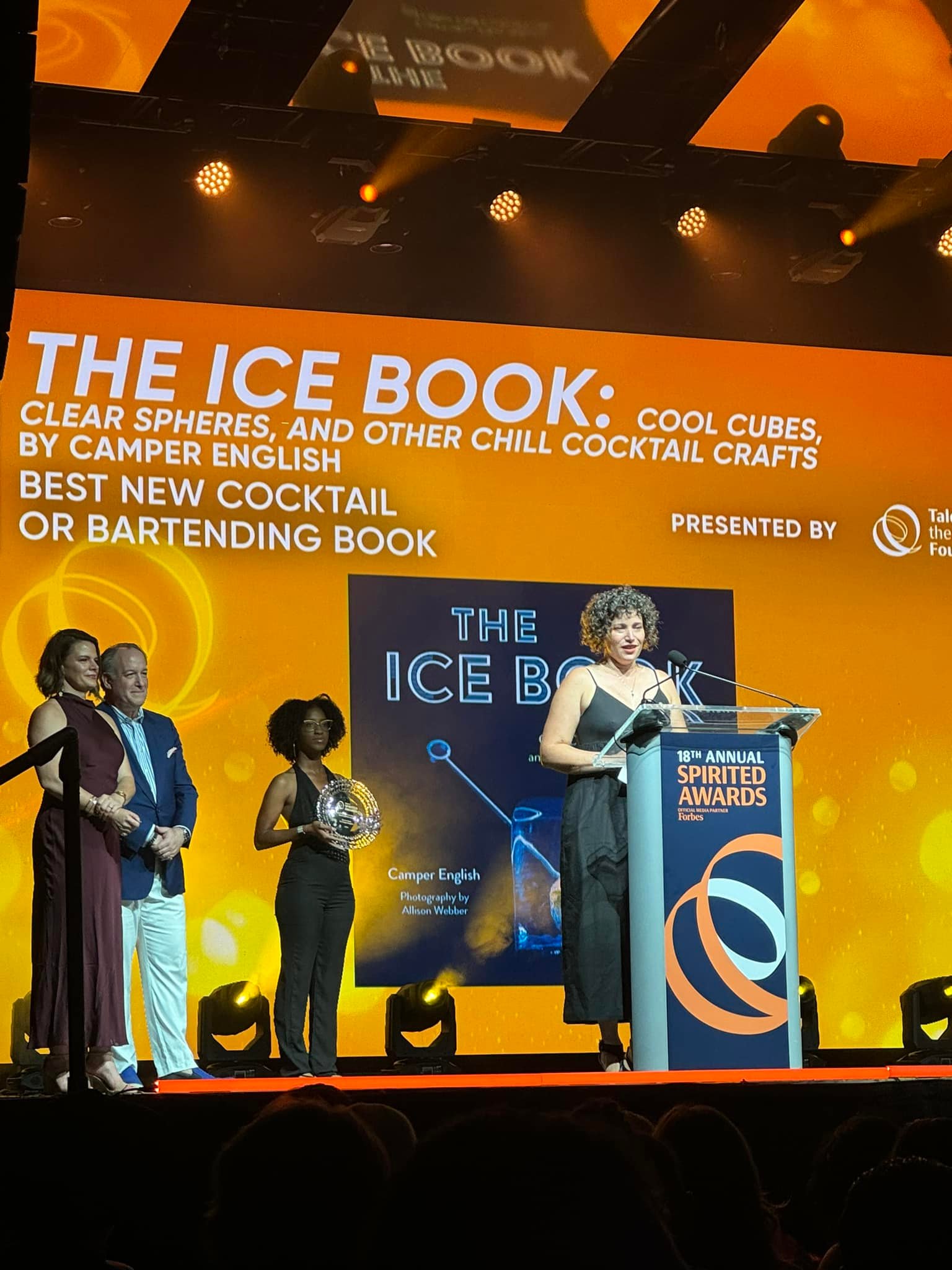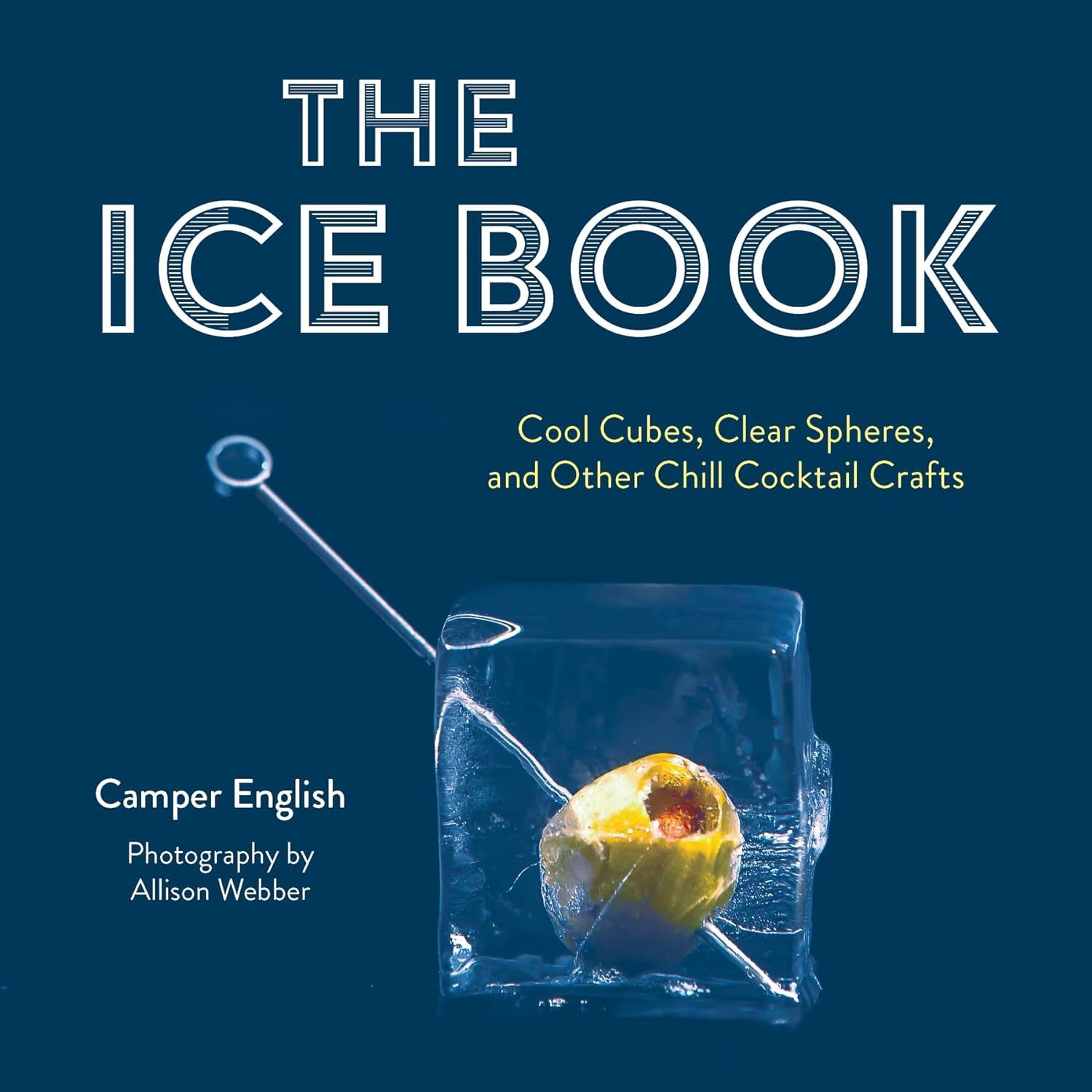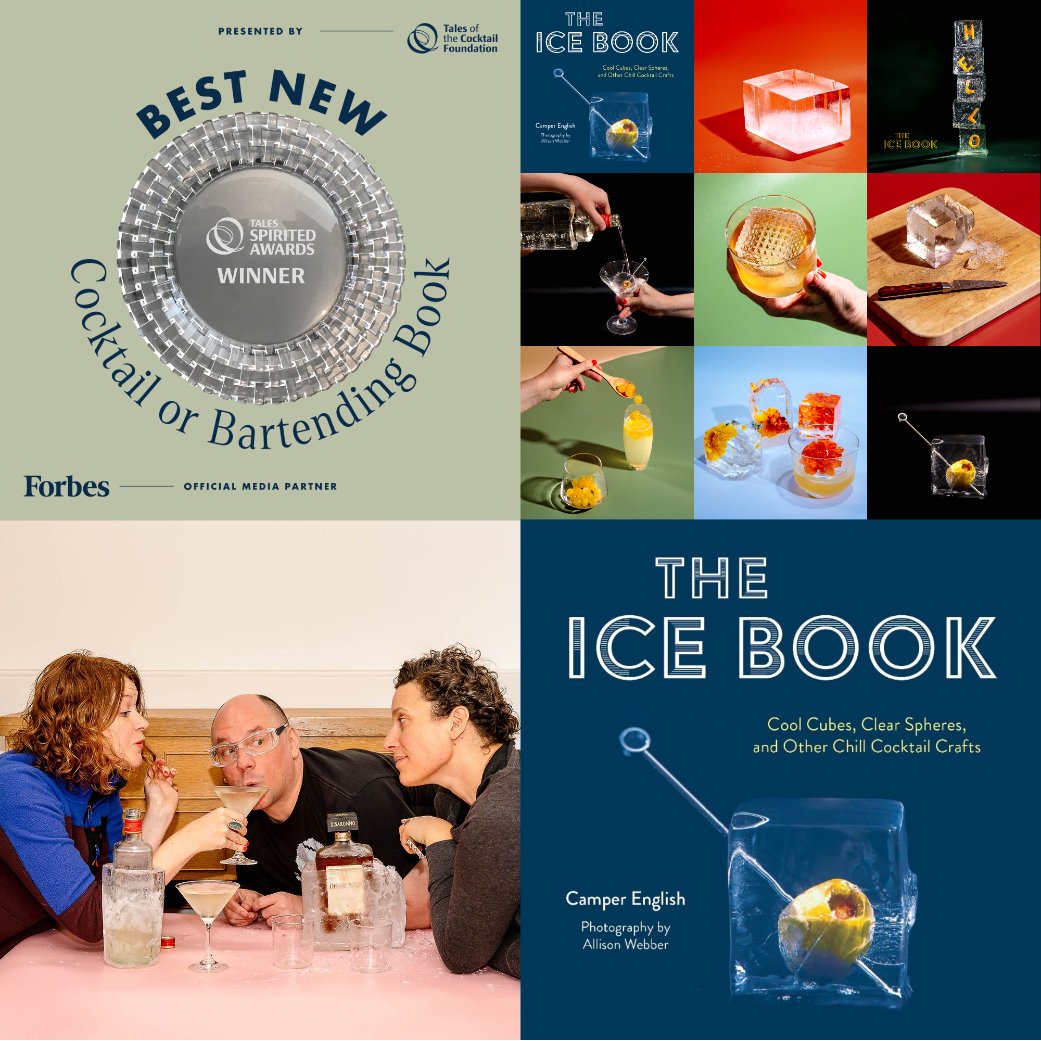Category: ice
-
Glow in the Dark Ants in Ice Cubes
I was trolling the dollar store for things to freeze into ice cubes, as I do, and found these large fluorescent ants.
I froze them into ice cubes using my Clearly Frozen tray. Then I shined a blacklight on them. They look awesome, even better in a glass with a drink.
There is a video of that here on my YouTube channel.
For more fun tips, check out The Ice Book.
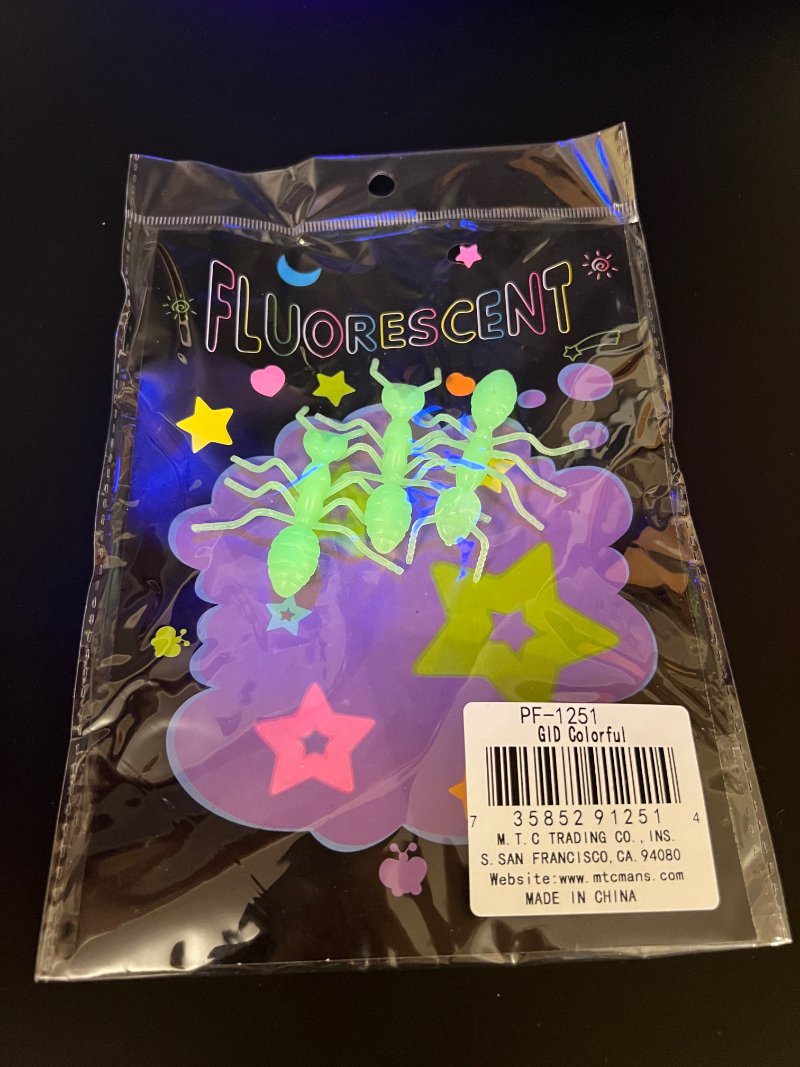
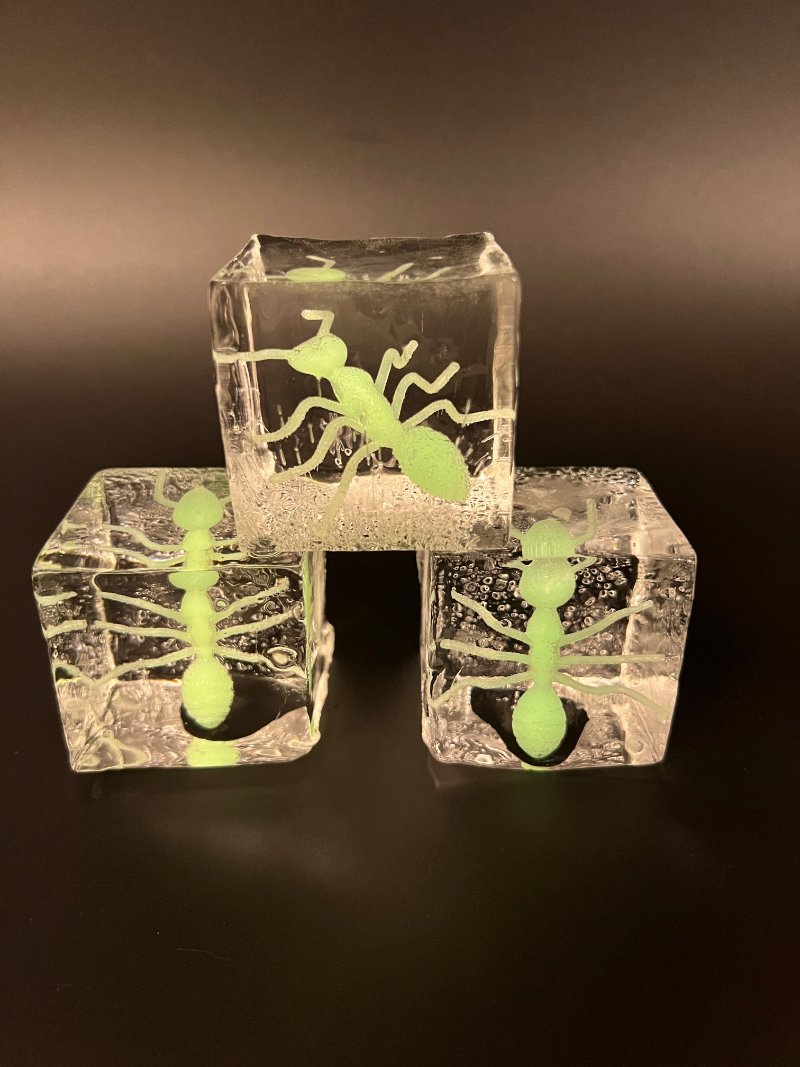
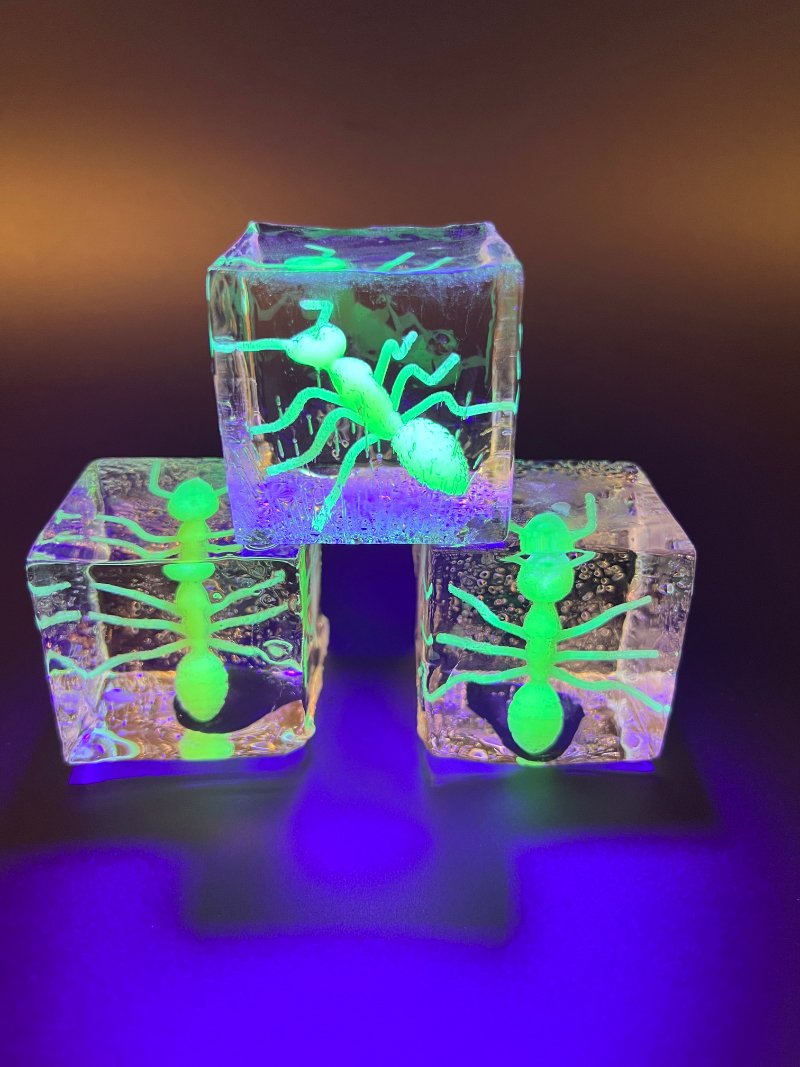
-
Put a Ring In It: Ring Inside a Clear Ice Cube
I was browsing in the dollar store for stuff to freeze into ice cubes, as I do, and found a bag of party favor rings. They’re made for kids and so can only fit about halfway up my pinky finger, but it’s proof of concept.
To freeze the rings into ice, I used my IceOlogy clear cube tray, which has an open top. I simply put a piece of bamboo skewer across the top of the opening, hanging the ring in the top part of the water.
They came out great. One of the rings was a little deeper into the ice than the other (making it really hard to wear), but that can easily be controlled.
Here are some pics.
For more information about clear ice and my book The Ice Book, check out this page.
-
Why the Shape and Size of Ice in Your Drink Matters
My latest story for Food & Wine is "Why the Shape and Size of Ice in Your Drink Matters."
-
Talking About Ice on the America’s Test Kitchen’s Proof Podcast
I did an interview with America’s Test Kitchen a long time ago, and it just went up. The first half of the episode is on the history of ice. I come in at around 27 minutes in.
The episode is called Why Are Americans So Obsessed with Ice?
Start your own ice obsession by buying books mentioned in the episode:
The Ice Book, by me! [amazon] [bookshop] More info here.
Ice by Amy Brady [amazon] [bookshop]
-
Why Did The Lake Ice Industry End?
Another section cut from my Vinepair article on lake ice from Norway (yesterday I shared the section on different types of ice blocks) is this one below. In it I explain why lake ice went out of fashion. It wasn’t only that ice making machines got better….
Rise of the Machines
In her book Ice: From Mixed Drinks to Skating Rinks–a Cool History of a Hot Commodity, author Amy Brady describes the downfall of the natural ice industry. Now that ice had become a daily necessity in America toward the end of the 1800s, ice companies harvested blocks from local rivers adjacent to cites; not just from far-afield crystalline lakes. The water was often polluted with agricultural and industrial waste, and in some years the bacteria-laden ice caused outbreaks of disease. (Even more problematically, these same source rivers were used for the drinking water.)
Bartenders noticed. The Standard Manual of Soda and Other Beverages, published in 1897, noted, “Some dealers put shaved ice into the soda water when served. It is a tedious process to grind the ice on a shaver, and makes the process of serving drinks much slower; ice is usually impure, and the beverage is really not fit to drink; and lastly, the beverage quickly loses its gas and tastes flat.”
Dirty soda wasn’t the only issue impacting the old-school ice business. The period of natural global cooling known as the Little Ice Age was ending- 1850 is usually cited as the end of the era. Many lakes previously harvested for ice didn’t freeze as deep as they used to; in some years not at all.
Machine-made ice also became less expensive into the early 1900s, especially after manufacturers switched to using ammonia as a coolant. Brady writes, “Withing a few years of [World War I in 1918] ending, the electric refrigerator went from being a novelty of the rich to one of the country’s most common household appliances.”
Machine ice had become the new standard, so some extant companies clinging to solvency tried to rebrand their old-fashioned lake ice handmade by Mother Nature as a craft luxury good. It didn’t catch on at the time, but maybe one of these days…
Read the original article on Vinepair here.
-
Ice Blocks Are Made in Many Different Ways
In the story I wrote for Vinepair about harvesting lake ice in Norway, a couple sections got cut out. They weren’t essential to the story, but I liked them a lot!
This first section is about ice blocks – I was researching the blocks people use at different ice hotels and ice carving festivals to see if they were machine or nature-made. The results are fascinating:
Other Lakes, Other Places
Not all ice blocks are equal. The Minnesota Ice Festival this year features the world’s largest ice maze, with all the 3,452, 425-pound blocks for it produced by a fast (and semi-clear) brine-cooled block-making machine owned by Minnesota Ice.
Orderud of DesignIce in Norway says that the blocks for a lot of other ice mazes and ice hotels (the non-see-through parts anyway) are typically made from compressed snow, rather than ice. Clear Clinebell blocks are sometimes used for the windows.
The Songhua River is the source for “most” of the thousands upon thousands of ice blocks used for the huge annual Ice and Snow Festival in Harbin, China, not too far from the northern border with Russia. Reportedly there are more than 2000 sculptures and constructions in the theme park built from ice or snow, and some of the ice structures reach over 150 feet in height.
And at the World Ice Art Championships, held annually in Fairbanks, Alaska, blocks are taken from gravel ponds and standardized to 6 by 4 by about 2.5 feet (depending on how thick the ice is that year). Leigh Anne Hutchison, member of the Ice Alaska Board of Directors, says of the pond blocks, “Some even are cool enough to have methane bubbles in them.”
That sounds a bit more “scary” than “cool,” until you realize that nobody is trying to eat that ice. (The blocks with methane bubbles do look pretty groovy though; she sent me pictures.) As far as Orderud is aware, none of the naturally frozen ice for these or any other festivals is served in drinks.
Read the story on Vinepair here, and imagine this section in it.
-
The Return of Ice from Lakes
I visited Norway late last year to see an “ice farm.” I wrote it up for Vinepair.
The story I turned in was about twice as long (my bad) so I’ll also share some of the stuff that was cut out here over the next couple of days. For now, here is the story.
Frosty, cooling drinks like juleps and cobblers were trending in early 1800s America, their popularity driven by the recent year-round availability of ice. Blocks of it were cut from ponds and lakes in Massachusetts and Maine in the winters, then sold locally or exported abroad on ships specially insulated to keep as much of it solid as possible.
When the cold cocktail trend caught on in the United Kingdom, thanks in part to books like Charlie Paul’s “Recipes of American and other Iced Drinks,” London ice delivery men wore uniforms with eagle buttons to reinforce the product’s U.S. provenance. Initially, ice was a luxury product over there, and the Wenham Lake Ice Company (located just north of Salem, Mass.) was the leading provider in London, at least until counterfeit cubes flooded the market.
In 1873, The Food Journal reported that “the use of ice has gradually increased among our population in the last twenty years, at an ever-accelerating rate, although it is as yet by no means as necessary an article in our domestic economy as among our American cousins,” and also that most of the U.K.’s ice now came from Norway. The country had a long-established relationship selling ice (usually along with fish) to the U.K. and wanted in on the cool new action. In fact, one Norwegian company renamed one of its local lakes from Lake Oppegård to Wenham Lake so that it could sell its ice under the same name as the famous American company.
-
Make Clear Ice Shell Shot Glasses, Bowls, and Other Shapes
Most of us ice nerds know about making a clear ice sphere shell as pioneered by The Aviary, but you can use the same easy technique to make other shapes.
The technique to make the ice shell for a drink inside a sphere can be found in The Ice Book – and you can also find it in this story in Imbibe Magazine.
Inspired by a video of a Midwestern lady who used the same technique to make covers for ice lanterns in 5-gallon pails, I made some other shapes.
Notes and Tips for making Ice Shell Containers
- Fill a plastic container with water and leave the top off. Freeze for a few hours until you can see a shell forming around the insides.
- The top layer will be thicker than the bottom and sides, so keep that in mind.
- After the first few hours I dipped the container in warm water to loosen it and slid out the shell. I put it back in the freezer outside of the container so that the bottom would freeze faster.
- After the layer is thick enough, poke a hole and let the interior water drain.
- I expanded the holes using a metal stick dipped into hot/boiling water. See below for another method.
For this shot glass below, I used the copper pan bottom to melt off the top of the shape entirely. I think it looks great. The downside is that you loose a lot of the height of the shot glass this way, so this would be best in a taller container.
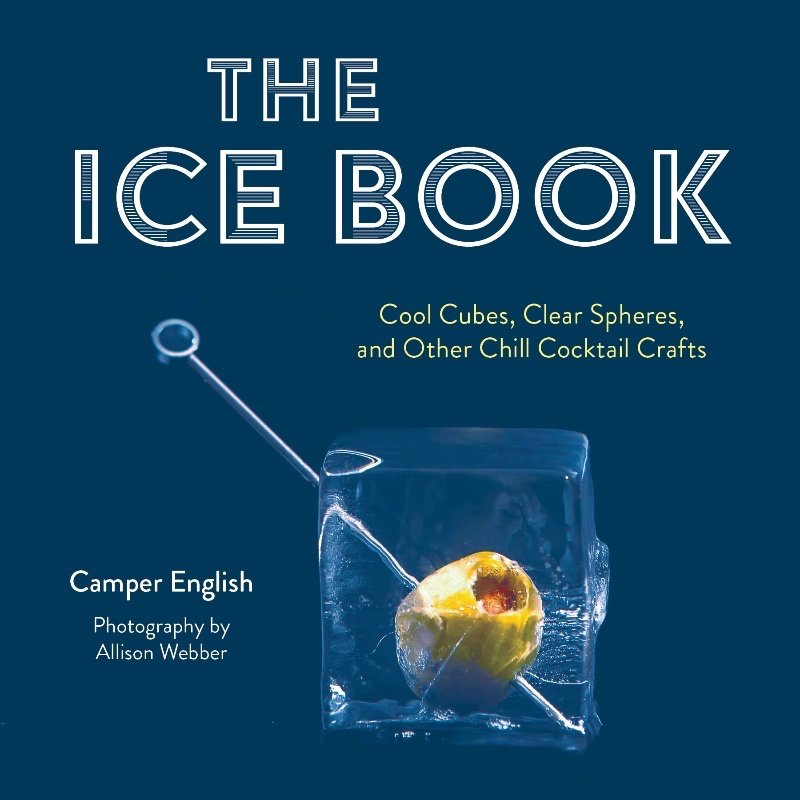 If you enjoyed this post, please consider purchasing a copy of The Ice Book to help support this blog, thanks!
If you enjoyed this post, please consider purchasing a copy of The Ice Book to help support this blog, thanks! -
The Ice Book Wins Best Cocktail or Bartending Book at the Spirited Awards!
The Ice Book is the winner of the Best New Cocktail or Bartending Book at the 2024 Tales of the Cocktail Spirited Awards!
This is the highest award within the global bar community. I am delighted!
The Ice Book’s photographer Allison Webber was there to accept the award for us both.
The official Spirited Awards press release is here.
Buy The Ice Book from Amazon, Bookshop, or from your local neighborhood indie bookseller.
